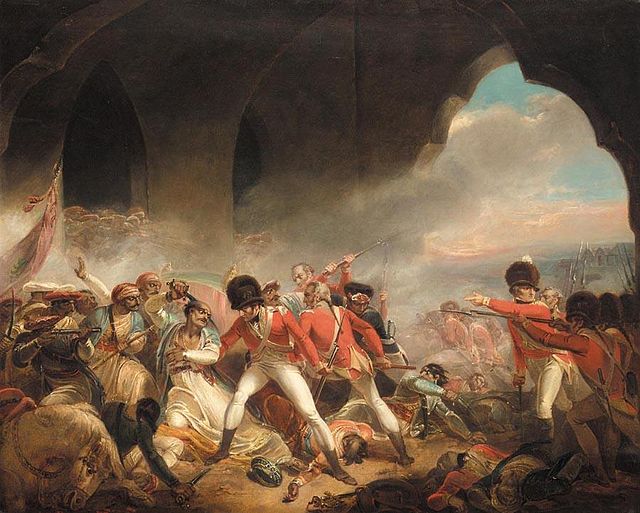Siege of Seringapatam (1799)
The siege of Seringapatam was the final confrontation of the Fourth Anglo-Mysore War between the British East India Company and the Kingdom of Mysore. The British, with the allied Nizam Ali Khan, 2nd Nizam of Hyderabad and Marathas, achieved a decisive victory after breaching the walls of the fortress at Seringapatam and storming the citadel. The leader of the British troops was Major General David Baird, among the lesser known allies were the Portuguese in Goa and Damaon. Tipu Sultan, the de facto ruler after the death of his father, who had usurped the throne of Mysore, was killed in the action. The British restored the Wodeyar dynasty back to power after the victory through a treaty of subsidiary alliance and Krishnaraja Wodeyar III was crowned the King of Mysore. However, they retained indirect control of the kingdom's external affairs.
The Last Effort and Fall of Tipu Sultan by Henry Singleton
A Qajar Persian copy of a British painting of the assault
The Siege of Seringapatam by Joseph Mallord William Turner
The assault of Seringapatam
The Fourth Anglo-Mysore War was a conflict in South India between the Kingdom of Mysore against the British East India Company and the Hyderabad Deccan in 1798–99.
The Storming of Seringapatam by Giovanni Vendramini, 1802
The Last Effort of Tippoo Saib at Seringapatam by B. Clayton, 1840
The Last Effort and Fall of Tippoo Sultaun by Henry Singleton, c. 1800
Finding of the Body of Tippoo Sultaun by Samuel William Reynolds, 1800







